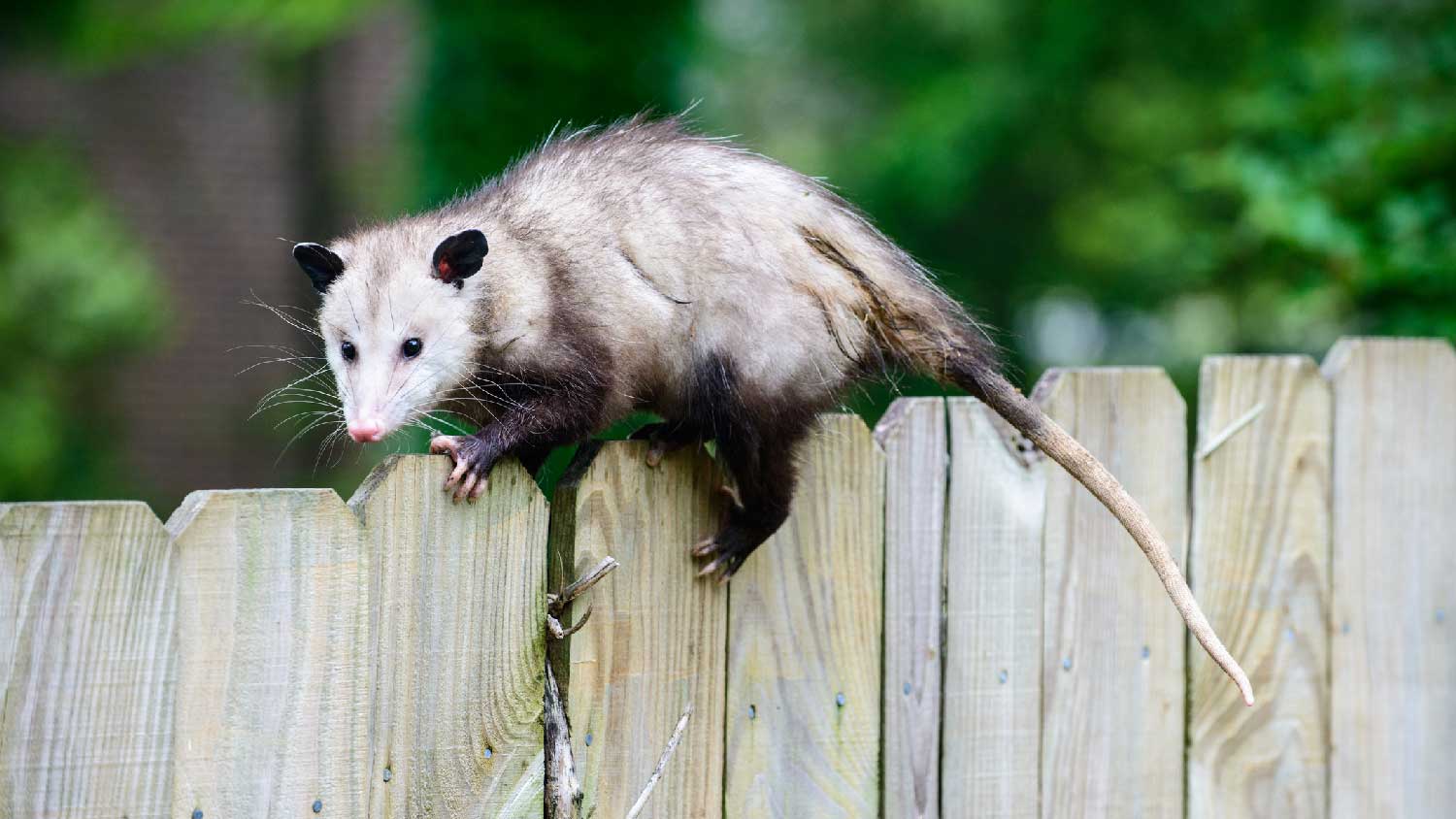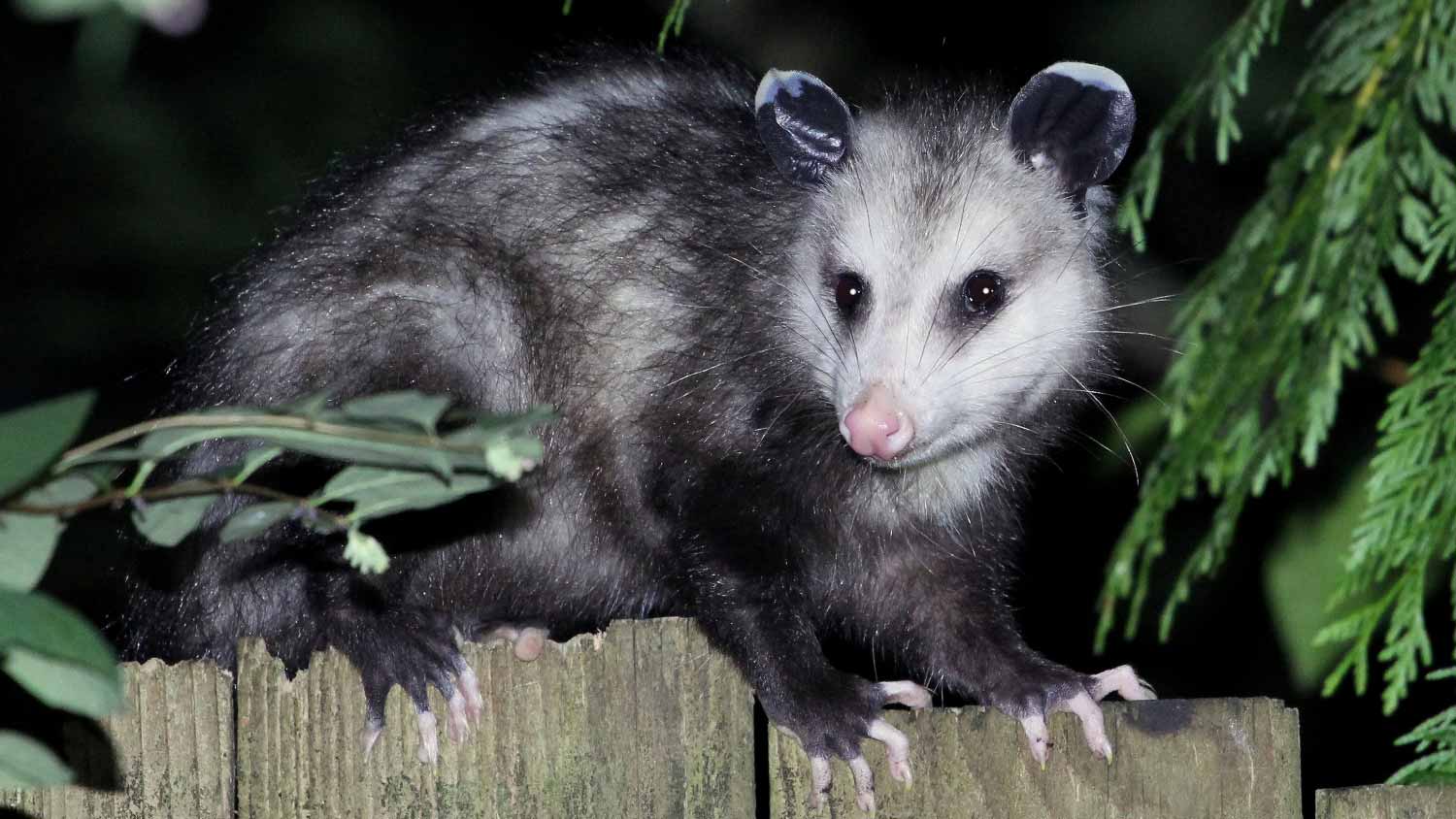
Raccoons on your property can cause a lot of damage to your home and yard. This guide breaks down raccoon removal costs so you can budget accordingly.
It’s more than the name


In North America, “possum” and “opossum” have become colloquially interchangeable when referring to the same animal.
The animal in question is the Virginia opossum, North America’s only marsupial.
Australian possums are different animals, but they are closely related to opossums.
There’s a critter in your trash: Triangular face, hairless rat-like tail, and possibly screaming at you. Is it a possum or an opossum? In North America, we call these animals possums, but that’s not technically correct. While we use the terms “possum” and “opossum” interchangeably, these are distinct animals with notable differences. We’ve created a guide to help you distinguish possums versus opossums.
Possums and opossums are different animals with distinct characteristics and mannerisms.
| Type of Difference | Opossum | Possum |
|---|---|---|
| Size | 15–20 inches | 13.75–21.65 inches |
| Color | Grey-white | Grey-brown to red-brown |
| Tail | Hairless | Bushy |
| Location | North America | Australia |
| Habitat | Farmland, woodlots, and residential areas | Forests, woodlands, and residential areas |
| Disease | Can carry disease | Carries fewer diseases |

These marsupials are closely related but visually distinct.
Possums have bushy tails with fur extending right down to the tip. Opossum tails are thin and relatively hairless, like a rat’s tail. Both animals’ tails are fully prehensile, allowing them to wrap around an object and move around at will.
The North American opossum has a mostly gray body, white face, and black legs and ears. Possums, on the other hand, can vary in color—ranging from grey-brown to red-brown, with a different colored underbelly depending on the type of possum. There have been reports of black, brown, and albino opossums, but those are fairly rare occurrences.
Opossums have an elongated face, giving them a longer snout, smaller eyes, and slender, rounded ears. Possums have a stout snout, with big beady eyes and ears that face forward like a large mouse. Opossums have white faces that contrast with their darker bodies, while possums tend to be uniform in color.

Worlds away, yet so closely related, possums and opossums aren’t even on the same continent.
Virginia opossums are native to North America and the only marsupial found on the continent. Possums are predominately located in Australia, with certain species native to other Oceanic regions like New Guinea and Sulawesi.
Possums and opossums are attracted to similar habitats, including forested areas, woodlands, and urban areas, but you’ll only find certain species of possums in heavily forested areas. As burrowing scavengers, opossums like hiding under sheds and woodpiles, whereas possums tend to be attracted to ceilings and roofs.
Both animals are also prone to den. Possums use more natural surroundings for their dens, and can be found in hollow branches, tree trunks, fallen logs, rock cavities, or hollow termite mounds. Opossums use their surroundings to set up shop and can often be found using the abandoned dens of other animals, cavities in trees, or trash heaps.
Possums and opossums are omnivores, so they eat both meat and vegetables as part of their diet. Opossums have a much meatier diet and often eat insects, worms, reptiles, birds and their eggs, berries, fruits, small mammals, and carrion. While possums eat meat such as bird eggs, baby birds, and some insects, their diet mainly consists of vegetation like eucalyptus leaves, shrubs (mainly wattles), herbs, flowers, and fruit.

Possums and opossums live quite similarly. Neither are aggressive creatures and will only hiss and bare their teeth if they’re scared or perceive you as a threat. A well-known quirk of opossums is playing dead to avoid confrontation, but this behavior isn’t something they can control; it is a response to extreme fear.
As nocturnal animals, both the possum and opossum can mostly be seen wandering around at night and are attracted to dark places during the day. Possums are very territorial, but thankfully, opossums are not. You’ll still likely need to hire a local wildlife removal pro to get them off your property if they’re causing problems, but it won’t be as much of a challenge.
From average costs to expert advice, get all the answers you need to get your job done.

Raccoons on your property can cause a lot of damage to your home and yard. This guide breaks down raccoon removal costs so you can budget accordingly.

When budgeting for possum removal costs, consider number of animals, location, method of removal, and whether you do it yourself or hire a professional.

The cost to remove a groundhog can vary depending on where you live and whether you do it yourself or hire a professional. We’ll help you figure out the true cost of groundhog removal, along with strategies for humane trapping and release.

Many people who move to desert climates for the first time are shocked to find that scorpions can come through air vents—here’s how to stop them.

Removing squirrels humanely from your yard can be tricky if you’ve never done it before. Here’s what you need to know about using bait for a squirrel trap.

Discover how to keep frogs away using humane tactics. From fences and barriers to decoys and repellents, learn how to maintain a frog-free environment in your yard.